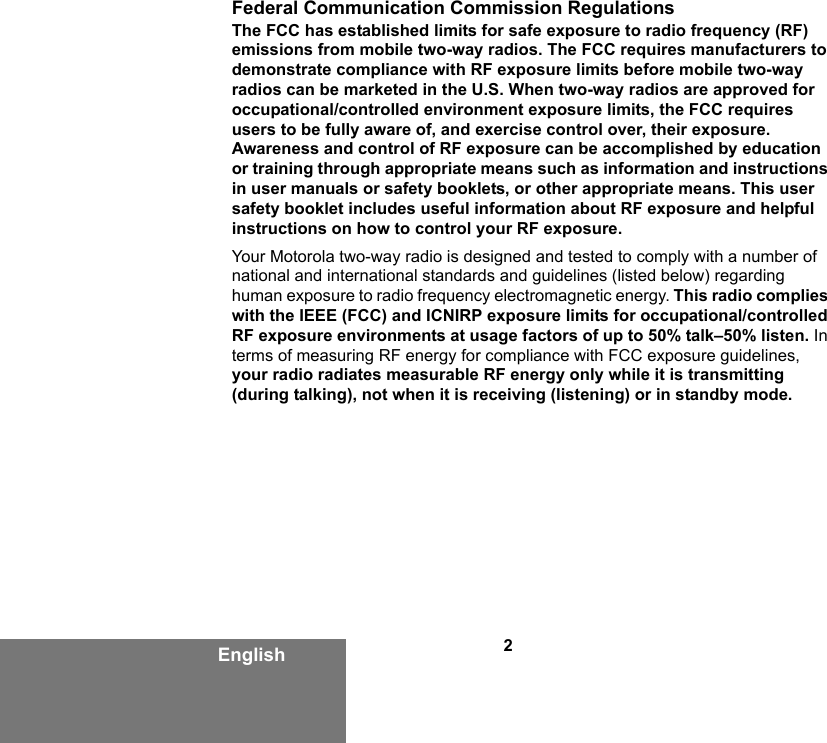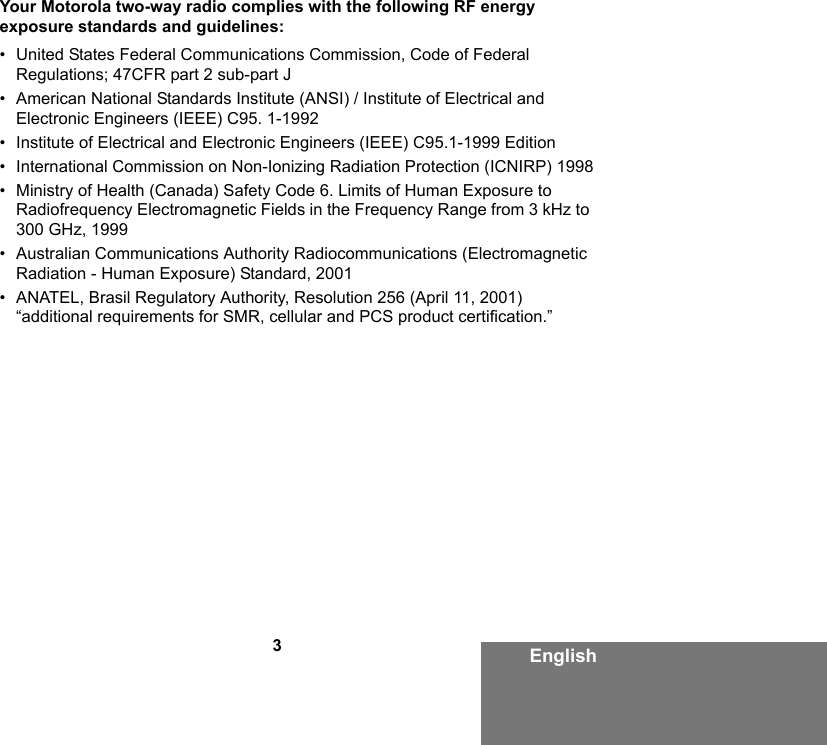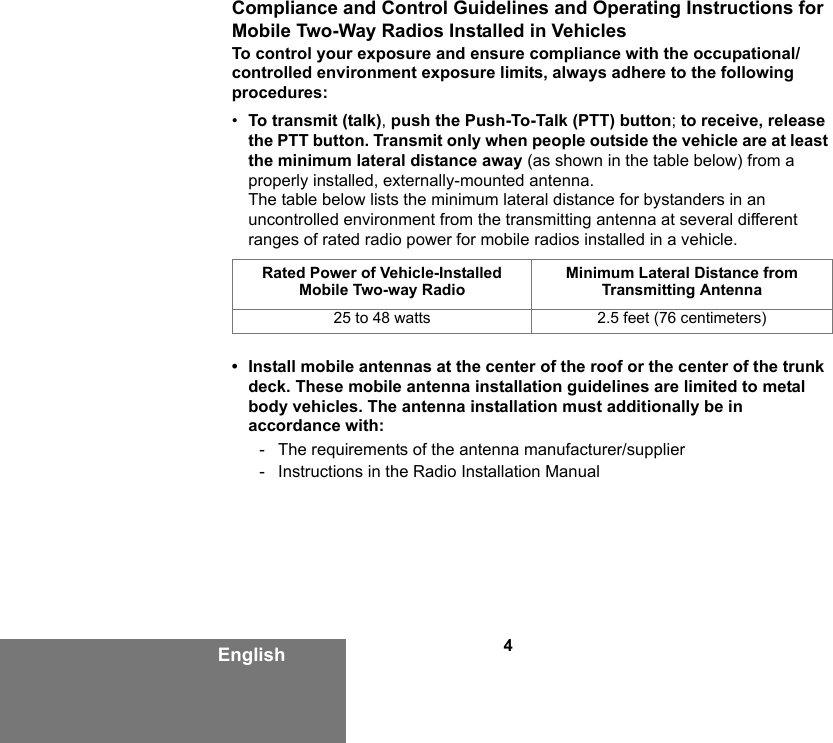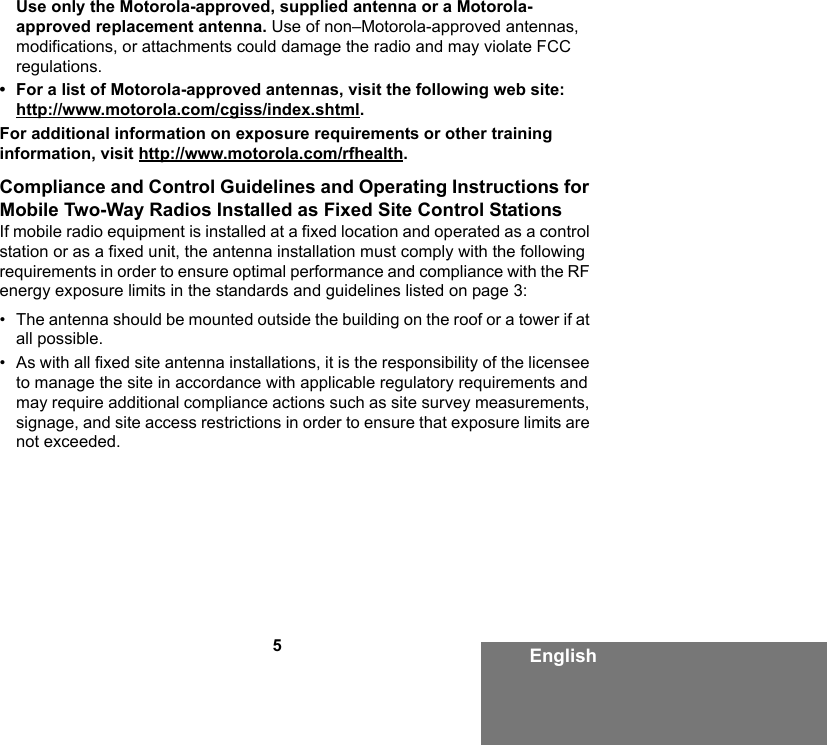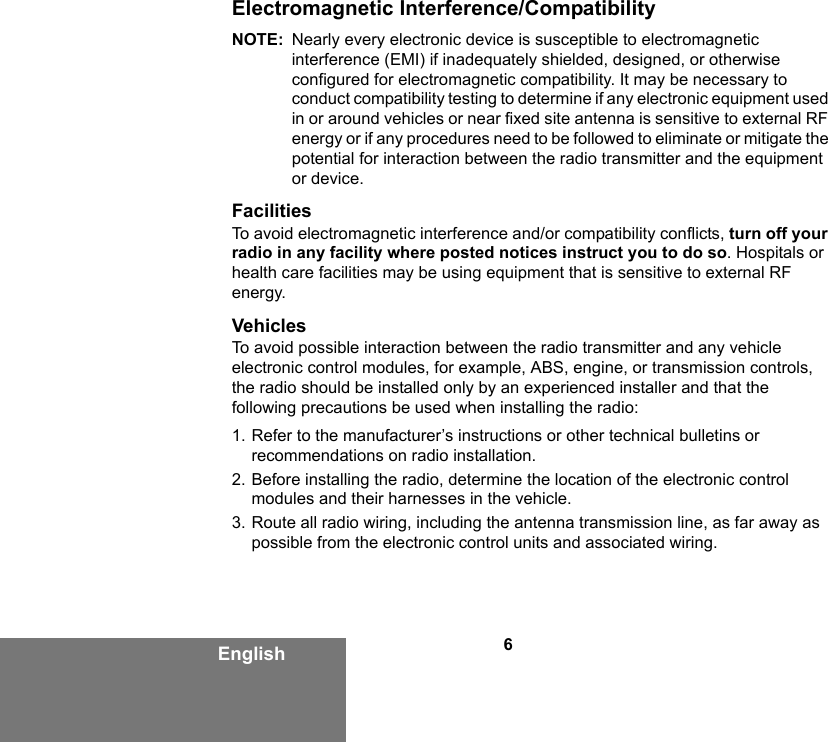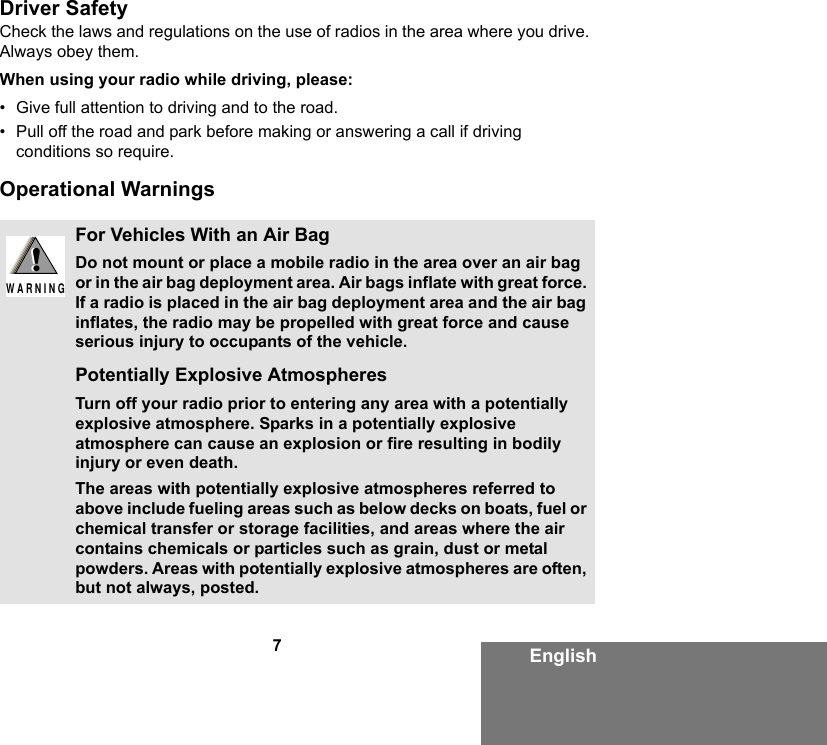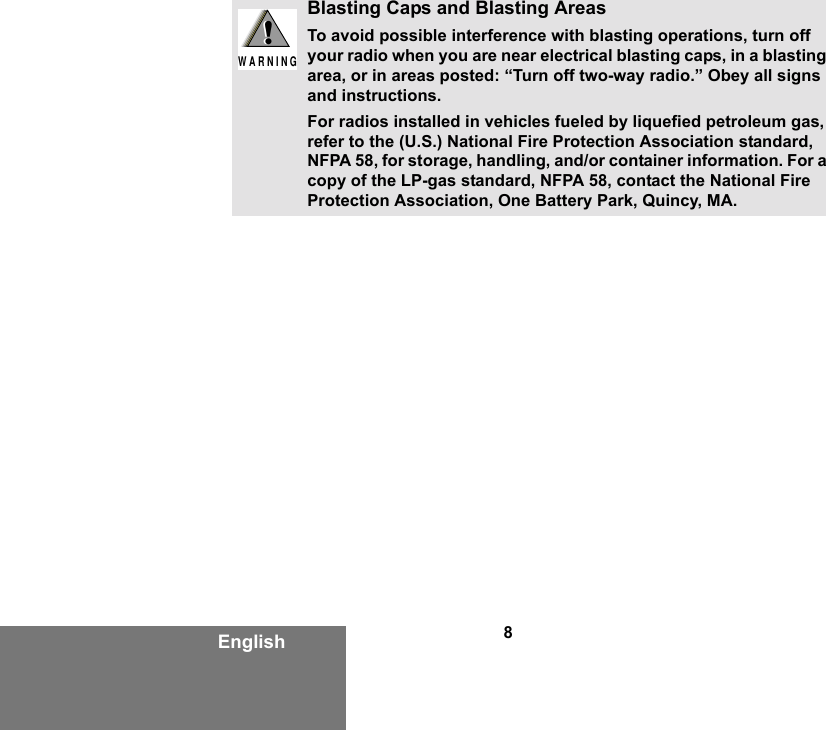Motorola Solutions 92FT4859 Mobile and Base Station Transmitter User Manual Mobile Safety Booklet 6881096C69 O
Motorola Solutions, Inc. Mobile and Base Station Transmitter Mobile Safety Booklet 6881096C69 O
Contents
- 1. Exhibit D Users Manual per 2 1033 c3
- 2. RF Safety Manual
RF Safety Manual
![EnglishProduct Safety and RF Exposure for Mobile Two-Way Radios Installed in Vehicles or as Fixed Site Control Stations(CDM Professional Series™ CDM750 / CDM1250 / CDM1550UHF Band 2 [450-512 MHz] 1.5ppm Models)The information provided in this document supersedes the general safety information contained in user guides published prior to February 2002.Compliance with RF Energy Exposure Standards NOTICE: This radio is intended for use in occupational/controlled applications where users have been made aware of the potential for exposure and can exercise control over their exposure. This radio device is NOT authorized for general population, consumer or similar use.BEFORE USING THIS RADIO, READ THIS BOOKLET WHICH CONTAINS IMPORTANT OPERATING INSTRUCTIONS FOR SAFE USAGE AND RF ENERGY AWARENESS AND CONTROL INFORMATION FOR COMPLIANCE WITH RF ENERGY EXPOSURE LIMITS IN APPLICABLE NATIONAL AND INTERNATIONAL STANDARDS.!C a u t i o n© Motorola, Inc. 20028000 W. Sunrise Blvd., Ft. Lauderdale, FL 33322Printed in U.S.A. 7/02.*6881096C69*68P81096C69-O](https://usermanual.wiki/Motorola-Solutions/92FT4859.RF-Safety-Manual/User-Guide-289279-Page-1.png)
